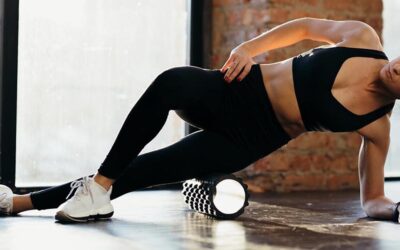Written by Dr. Martin Nguyen
Whether your job requires you to sit all day or you’ve just killed leg day at the gym, chances are you’ve complained about tight hips recently. Shakira knew this all along when she released the record-breaking single “Hips Don’t Lie”. Corny you might say, but it’s true. If your hips are constantly held in a static position (hence the statement, if you don’t use it you lose it) or you place the surrounding muscles through constant grueling activation, the joint and surrounding musculature will end up getting hypomobile. They sure won’t lie to you!
HELP!
Your body will constantly let you know by crying out for help. The body is smarter than we give it credit for. It will send signals to your brain asking you to move your tight hips around in every which way in hopes of relieving the symptoms. You have two options, take action or ignore. Don’t ignore this calling because your hips will only get tighter which will cause chain reactions of other potential injuries. We definitely do not want that to happen!
What makes up the hip joint?
In order to start improving the mobility of your hips and how to they move, you have to know what makes up this important body part.
The hip is a ball-and-socket synovial joint (fancy name for two bones jointed together with fluid that allows smooth movements) that allows the greatest amount of range of motion compared to any joint in the body besides the shoulder. It consists of the femur (head of the femur makes the ball) and the acetabulum of the pelvis (which is the socket). Surrounding this joint is a large amount of muscles, ligaments, and cartilage that have attachments to the hip.
As physical therapists we’re taught to always check the areas above and below the target joint. This gives you a better picture and assessment of what you’re dealing with.
Above your hips you have your core. Believe it or not, in order to move the pelvis efficiently, you must know how to stabilize the spine. The abdominals will help you do this. The core acts like a corset consisting of the transverse abdominals, rectus abdominals, and internal and external obliques. When activated, will hold everything together tightly and keep everything stabilized.
Below your hips you have all the major muscles with attachments to the legs that assist in freeing up the hips. You have major muscle groups such as the quadriceps, iliopsoas, adductors, hamstrings, and glutes. Located in front of your hip you have your hip flexors, these muscles often get tight and stiff when sitting for long periods of time. In the back you have your glutes and hamstrings, these are activated everyday during walking and using the stairs. On the inside of your leg are your adductors; these muscles are responsible for bringing your legs towards your body’s centerline (line that divides your body into left and right). Lastly, on the outside of your legs are your abductors, used anytime your move your legs away from centerline. These muscles all play a huge role in the lower body movement in every day tasks.
5 exercises to unlock those tight hips!
Here are a few exercises that you can incorporate into your daily routine.
Hip Flexor and Adductor Stretch (see images below)
- Kneel one leg on soft surface and the other knee is bent in front of you
- Use a dowel or rod for stability
- Drive your knee forward until you feel a stretch in the front of your opposite hip and groin
- Repeat while changing your foot placement
- Imagine a clock and you want to change your foot from 12 o’clock to 3 o’clock
Piriformis Stretch (see images below)
- Find a stable surface that you can prop your leg up
- Opposite leg will be foot flat on the ground and straight
- Lean forward until you feel a stretch in your buttock
- Relax from the stretch by standing up nice and tall
- Repeat until you get a good stretch
- This stretch can be modified in many ways. Adjust your body according to your flexibility level.
IT band and Abductor Stretch (see images below)
- Find a strong and stable object that you can lean on. I personally like to use the doorway.
- Cross your left leg over your right leg. Feet always stay flat.
- Use your right arm and reach directly over your head
- As you reach overhead, shift your waist out to the right
- You should feel the stretch on the outside of your hip
- Repeat on the other side.
Butterfly Adductor Stretch (see image below)
- Sit comfortably on the ground
- Bring both feet together towards your groin
- Actively push your knees towards the ground
- Stretch is felt on the inside of your thighs
Walking Hamstring Stretch (see images below)
- Start with one foot in front of the other
- Forward foot will maintain heel on the ground with toes point up
- With both hands, reach down in attempt to touch your toes. Opposite knee will bend as needed.
- A stretch will be felt towards the back of your leg
- Alternate legs, by taking step backwards and switching your reach towards the opposite leg.
Sum it up
There you have it! The keys to unlocking tight hips. In summary, the hip joint is an important structure in the body that helps contribute to balance and symmetry. Any slight asymmetry will cause increase risk for issues up the chain to the low back or down the chain to the knees. In today’s society of modern technology, it’s easy to get sucked into a static and stationary position for long periods of time. This often leads to stiffness of joints and muscles. When one area lacks motion, another area will compensate. You have to power to prevent this from happening! Start by being aware of the signs your body gives you, open up your hips, and allow your body to flow easier.


